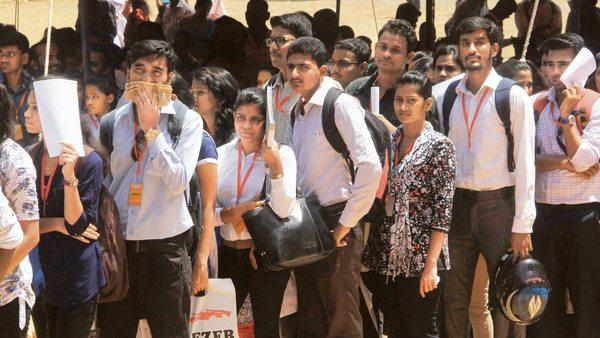One in Five Youths Worldwide Excluded from Education, Jobs and Training: ILO Report

Image for representational use only.Image Courtesy : Livemint
One in every five young persons—those aged between 15 to 24—around the world are currently not in employment, education or training according to an International Labour Organization (ILO) report. These youths have been granted the NEET status.
Among those classified as NEET, two-thirds are young women, making them more than twice as likely as their male counterparts to be affected by the changing conditions in the global labour market, says the tripartite United Nations (UN) agency.
Increasing automation, narrow focus on vocational training and lack of jobs to match qualifications are among the reasons behind the rise in the youth NEET rate globally, mentioned in the latest Global Employment Trends for Youth 2020: Technology and the future of jobs (GET Youth 2020), released earlier in March.
The report shows that 267 million out of 1.3 billion young people between the ages of 15 and 24 worldwide are neither gaining experience in the labour market, nor receiving income from work, nor enhancing their education and skills—suggesting that their labour remain underutilised. Out of these, 181 million are young women.
There is no country-specific break-up of this number but the growing NEET rate hasn’t left India untouched.
According to the report, the NEET rate has not deceased significantly in any region globally since 2005, with an upward trend in the number of young people classified as such since 2017.
Moreover, the report implies that the international target to reduce the NEET rate by 2020—which was also one of the 17 UN Sustainable Development Goals, adopted also by India—will be missed.
“Not enough jobs are being created for these young people, meaning the potential of millions is not properly tapped… We can’t afford to waste this talent or this investment in learning if we are to meet the challenges posed by technology, climate change, inequality and demographics,” Sukti Dasgupta, Chief of the Employment and Labour Market Policies, ILO Employment Policy Department, was quoted as saying.
Earlier in the month of January, in a report titled World Employment and Social Outlook: Trends 2020 (WESO), ILO had said that about half a billion people in the world do not have access to as many paid hours of work as they would want.
The situation of young people who are engaged in employment is “far from satisfactory,” as out of the 429 million young workers worldwide, around 55 million, or 13%, are suffering from extreme poverty.
The poor quality of many jobs held by young people manifests itself in precarious working conditions, a lack of legal and social protection and limited opportunities for training and career progression, according to ILO.
The report also shows that employees between the ages of 15 and 24, face a greater risk than older workers of losing their jobs because of further technological advances, and those with vocational training are even more vulnerable, left with a precarious future in the labour market.
All these forms of labour underutilisation in the early stages of a young person’s career can lead to a number of scarring effects, including lower employment and earnings prospects decades later, the report added.
Get the latest reports & analysis with people's perspective on Protests, movements & deep analytical videos, discussions of the current affairs in your Telegram app. Subscribe to NewsClick's Telegram channel & get Real-Time updates on stories, as they get published on our website.
























